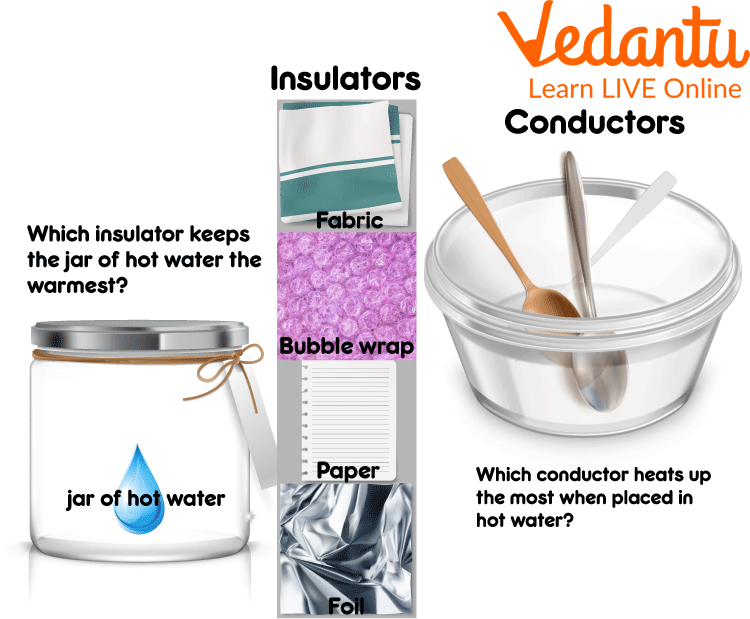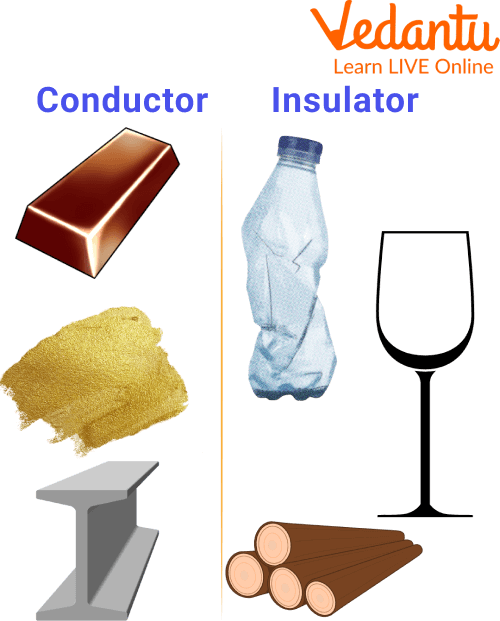




Introduction to Thermal Conductivity
Temperature is measured as a measure of thermal conductivity in a material. A low thermal conductivity material will transfer heat at a slower rate than a high thermal conductivity material. A metal, for instance, is normally very thermally conductive and efficient at conducting heat, while insulating materials like Styrofoam have the opposite property. The Greek letter "kappa" is often used to represent thermal conductivity. Temperature is measured in watts per meter-kelvin. Meters, watts, and kelvins are all measures of power. Aerogel, Polyurethane, and Vacuum are some effective thermal insulators. Silver, copper, and diamond are effective thermal conductors. In this article, we are going to learn about difference between conductor and insulator and their examples.
What is Conductor?
Electrical conductors are substances or materials that allow electricity to flow. An electrical conductor allows charge carriers, such as electrons or ions, to travel effortlessly between atoms when voltage is applied. The majority of metals, including copper, are regarded as good conductors, whereas nonmetals, or insulators, are regarded as poor conductors. Typically, good conductor of electricity include metals, metal alloys, electrolytes, and even some nonmetals like graphite and liquids like water.
Thermal Conductors
It is called thermal conductors when the material allows heat to pass through very easily. Ideally, metals such as aluminium, copper, steel, and iron conduct thermal energy well. Cooling items or warming them quickly can be accomplished using thermal conductors.
According to thermal conduction theory, molten motion moves across a temperature gradient to transport energy. Energy is transported by convection without involving macroscopic flows or internal stresses producing work, whereas molecular work does.”
What is Insulator?
Insulators are materials that prevent electrons from freely flowing from one particle of an element to another. If we apply some charge to such an element at any point, the charge remains at the original place and does not spread throughout the surface.
Thermal Insulator
A thermal insulator stops heat from flowing from one place to another. The term "thermal insulator" typically refers to a substance that prevents conduction. Conduction occurs when something hot physically contacts something cold. Heat travels from the hot to the cold surface, warming it. To prevent this from happening, you employ a material that heat cannot easily pass through (a thermal insulator).

Thermal Energy Experiment
Cold objects will remain cold for a long time when they're insulated, while hot objects will remain hot for longer when they're insulated.
Wool, plastic, and many fabrics, including wood and plastic, provide good thermal insulation. Materials that keep people warm are thermal insulators. Thermo-insulation materials in everyday life include clothing, carpets, and curtains.
Examples of Conductors and Insulators
Graphite, the human body, and the earth are all excellent electrical conductors. Metals such as copper, gold, and iron are examples of common conductors.
The following are some of the examples of insulators: Plastic, wood, and glass are some of them.
Difference Between Conductor and Insulator
Following are some of the difference between conductor and insulator:

Example of Conductor and Insulator
Summary
In this article, we have seen that conduction is the flow of heat energy between matter particles that are in contact. Thermal conductors are materials that are good thermal energy conductors. Materials that allow electricity to flow easily through them are referred to as conductors, whereas materials that do not allow electricity to flow through them are referred to as insulators. In the end we have seen the differences between them. The major difference between them is- in conductor there is the presence of an electric field but in insulator it doesn’t happened.
FAQs on Thermal Conductors
1. What is the best thermal conductor?
Diamond, together with graphite and graphene, is the best thermal conductor at room temperature, with thermal conductivity of more than 2,000 watts per metre per Kelvin, which is five times more than the best metals like copper.
2. Which metal is best for thermal conductivity?
Silver has the highest electrical conductivity of any metal. Currently, silver is used to characterise conductivity, and all other metals are measured against it. On a scale of 0 to 100, silver is 100, copper is 97, and gold is 76.
3. What is a good thermal insulator?
Fiberglass is the most common type of insulation used today. Because of the way it is created, fibreglass is able to decrease heat transfer by successfully weaving thin strands of glass into an insulation layer.









